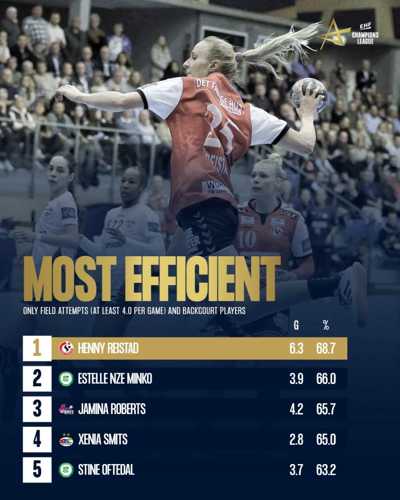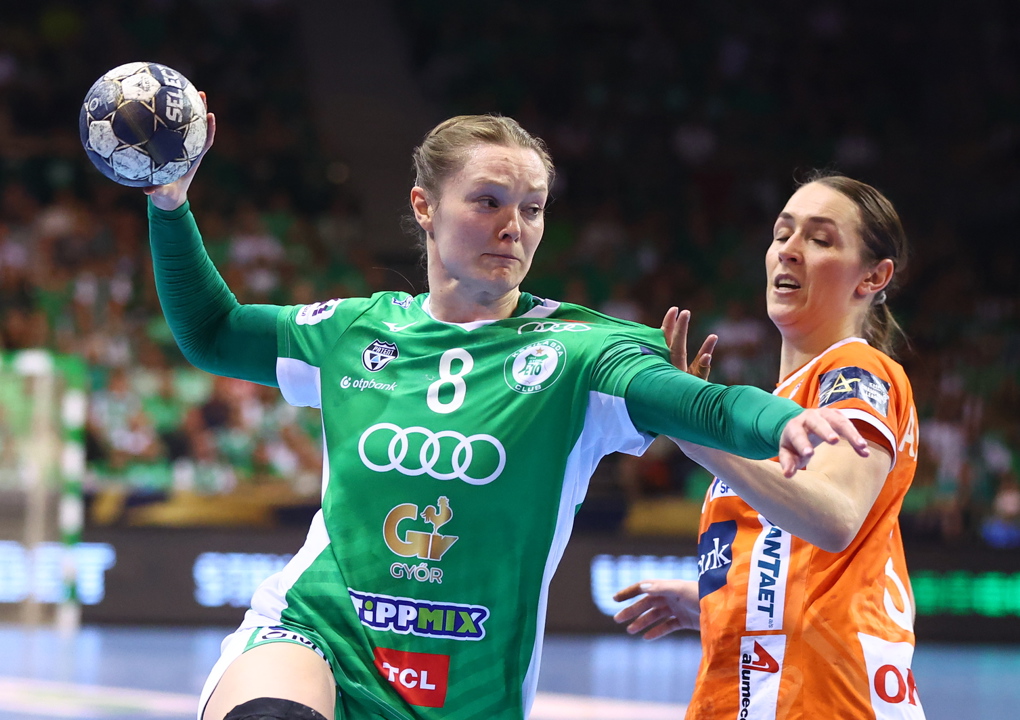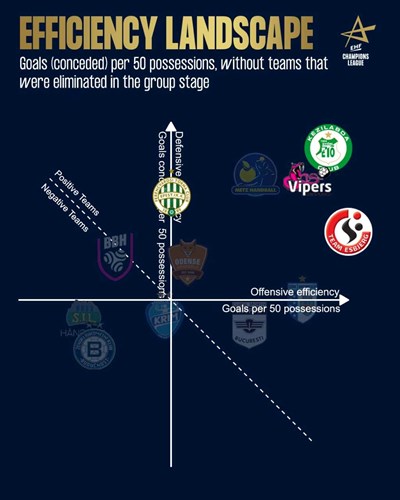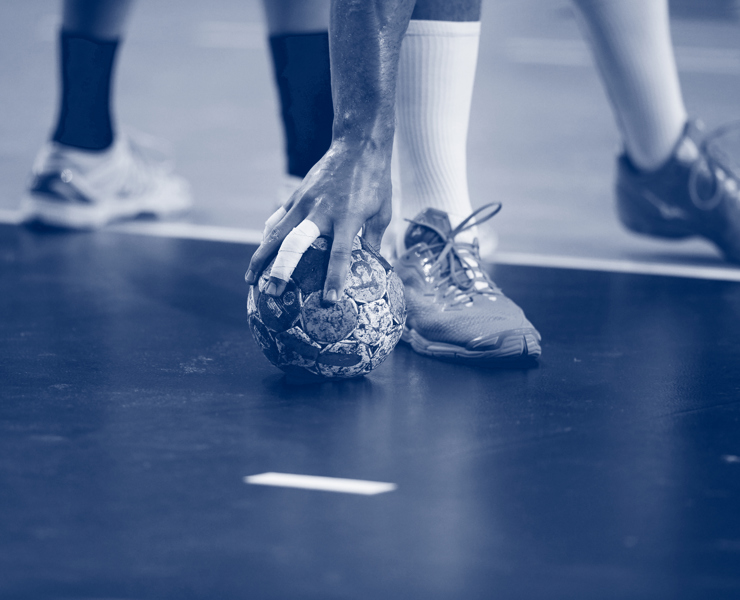Esbjerg: Offensive power
Since the beginning of the season, Team Esbjerg have positioned themselves as the offensive powerhouse of the EHF Champions League. They are the best team in attack, scoring 29.2 goals per 50 possessions. Adjusting goals to the same number of possessions makes teams genuinely comparable, since the raw number of goals is not only influenced by efficiency, but also by the number possessions (whether a team and their opponents plays rather fast or slow).
Their overall strong offensive number is mainly based on their outstanding shooting. With 67.9% they lead the competition here. From the field they score just marginally worse with 67.8%, which is also the best in the EHF Champions League. They only have problems at penalty throws even though they are the team that gets the third most attempts per game from the 7m line (3.9). With a success rate of 70.4%, just two teams score worse on penalties.

The engine of the strong attack is Henny Reistad, who not only scored the second most goals per game after Cristina Neagu (7.2), but even ranks first in field goals (6.3). In addition, she is highly efficient from the field. Among all back players with at least four throws per game, the Norwegian national player has the highest efficiency with 68.7%.
Even if they are not as good defensively as they are offensively, their biggest weak point is something else: crunch time. Crunch time in handball is defined as the last six minutes of all matches if the gap between the two teams is two goals or fewer at least once. With a goal difference of -11.1 calculated over 50 possessions, they are the third weakest team in the competition if it goes into crunch time. Their defence is even more of a weak point here, as 38.9 goals conceded per 50 possessions is more than any other team.









